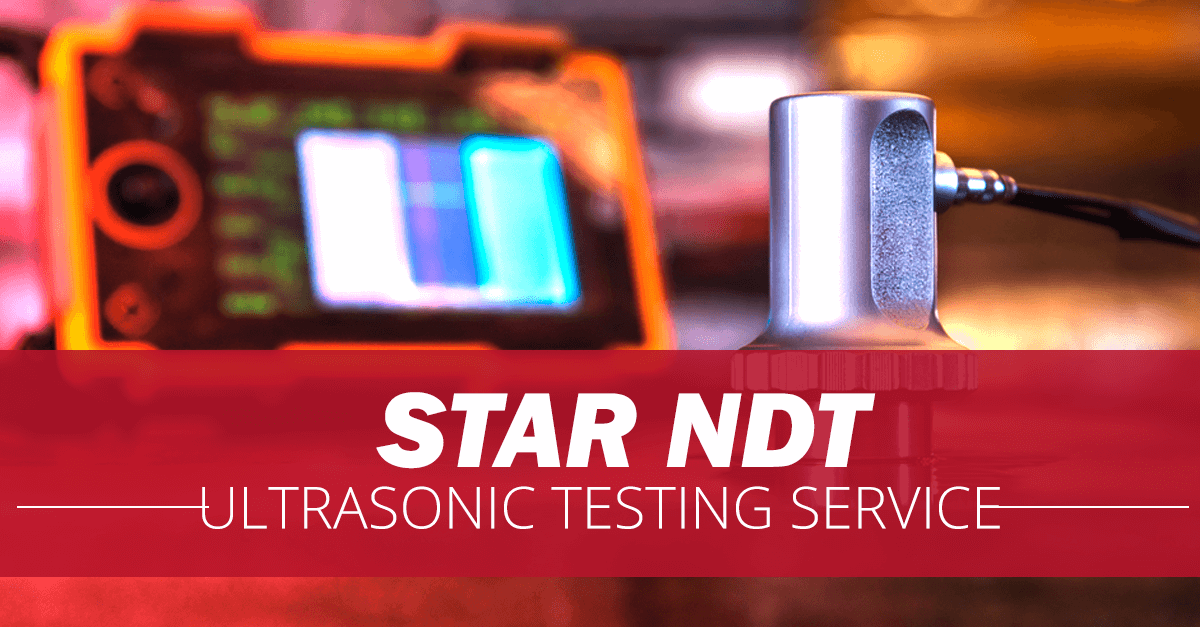ULTRASONIC TESTINGSERVICES HYDERABAD
Identify Imperfections Quicker and Way better with Ultrasonic testing

TO HELP YOU, STAR NDT SERVICESOFFERS ULTRASONIC TESTING (UT) SERVICES.
Ultrasonic testing is a conventional non-destructive testing (NDT) method for thickness testing Utilizing Ultrasonic testing, able to distinguish greatly smallest of defect or discontinuities in a component, with only one surface exposure required.
BENEFITS OF OURUT TESTING SERVICES AT A LOOK
- Quick, highly accurate and reliable inspections
- Finding any imperfection any flaws or discontinuities with smallest defect also can be detected
- Reduced risk of company accountability with documented safety standards
- Prompt results no down time, on the spot decisions can be made.
- Greater accuracy than other nondestructive methods in determining the depth of internal flaws and the thickness of parts with parallel surfaces
- Non-hazardous to operations or to nearby personnel and has no effect on equipment and materials in the vicinity.
HOW ITWORKS?
Ultrasonic waves in the object or material tested. In most common Ultrasonic testing applications, very short ultrasonic pulse-waves with center frequencies ranging from 0.1-15 MHz, and occasionally up to 50 MHz, are transmitted into materials to detect internal flaws or to characterize materials.
A common example is ultrasonic thickness measurement, which tests the thickness of the test object, for example, to monitor pipe work corrosion.
An ultrasonic testing or flaw detector, has a pulse produce circuit, which sends electrical pulses to a probe. The probe holds a piezoelectric crystal, which vibrates when it receives the electrical pulse. The vibrations from the crystal are ultrasonic, with a frequency in the range 1MHz to 15MHz.
Normal frequencies used in weld examination are between 2 and 5 Mhz. The ultrasonic vibrations leave the probe and are conducted into the material to be tested by a couplant, usually grease, oil, water etc
Within material, the ultrasonic beats or pluses travel in straight lines, until they hit an interface between two different materials (for example steel and air ), or a defect when some of the energy of the vibration will be reflected, like an echo from a wall or incline side . A small
Amount of the energy is reflected back to the probe, where it vibrates the piezoelectric crystal, generating a tiny electric current. These current returns to the flaw detector, where it is amplified, rectified, filtered and displayed on a cathode ray tube.
USEDMOSTLY BY
Ultrasonic testing is often performed on steel and other metals and alloys, though it can also be used on concrete, wood and composites, albeit with less resolution. It is used in many industries including steel and aluminum construction, metallurgy, manufacturing, aerospace, automotive and other transportation sectors.
Satisfied?Get a Quote
STAR NDT IS LEADING TEAM IN QUALITY INDUSTRY, WE PREPARE YOU IN BEST ATMOSPHERE OF TRAINING AND FLAWLESS SERVICES
contact us ABOUT US
